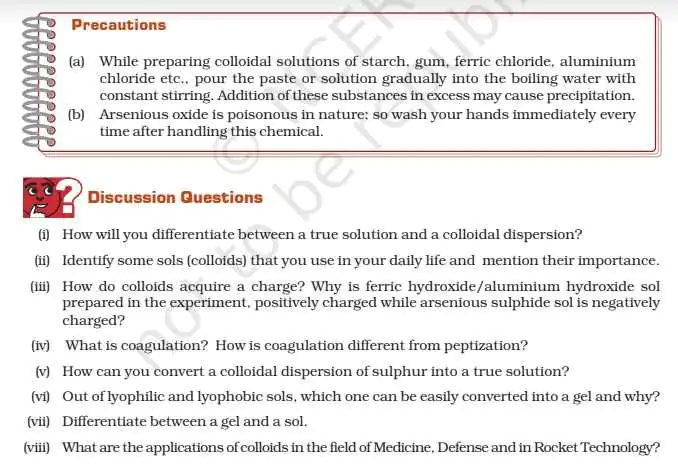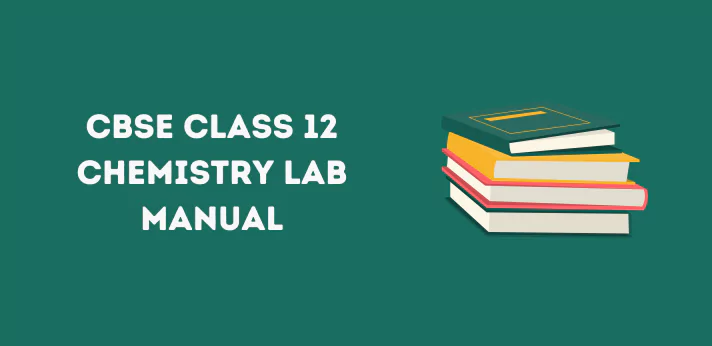CBSE Class 12 Chemistry Lab Manual is provided to the students to score well in the examinations. For a subject like Chemistry, it is important to remember the right reactions and what they result in is vital. Students must concentrate on Chemistry Practicals because it has been allocated 30 marks. They must try to get full marks in this section to increase their overall marks in the CBSE class 12 examination. Students should study the laws and theories before performing the experiments and are suggested to revise their practical notes before their examination. That’s why we are providing a Class 12 Chemistry Lab Manual for practice purposes to obtain a great score in the final examination.
[Index]
Overview
Before we discuss the Class 12 Lab Manual, let us check the CBSE Class 12 Summary; Below, we have mentioned the complete CBSE Class 12 Summary. The student is advised to check out to complete the summary.
| Particular | Description |
| Class | 12th |
| Subject | Chemistry |
| Board | CBSE |
| Category | Lab Manual |
| Study Materials | Click Here |
| Class 12 Free E-Book | Click Here |
| YouTube Channel | Click Here |
Class 12 Chemistry Lab Manual
Below we have mentioned the CBSE Chemistry Lab Manual for Class 12. Students have checked the complete Class 12 Chemistry Lab Manual in pdf for a great score in the final examination.
Example of Lab Manual

NOTE: The links given below for downloading Class 12 Chemistry Lab Manual in pdf format
Class 12 Chemistry Lab Manual Projects
| S.No. | Project No. |
| 1 | Projects 1-8 |
Class 12 Chemistry Syllabus
Check out the latest CBSE NCERT Class 12 Chemistry Syllabus. The syllabus is for the academic year 2024-25 sessions. First of all, check the CBSE Class 12 Chemistry Exam Pattern. Students should review the complete syllabus and exam pattern with the marking scheme.
Class 12 Chemistry Exam Pattern
In this section, we have mentioned the Class 12 Chemistry Exam Pattern. Students can check the Class 12 Chemistry Exam Pattern for the academic year 2024-25.
| Unit No. | Title | No. of Periods | Marks |
| Unit I | Solid State | 10 | 23 |
| Unit II | Solutions | 10 | “ |
| Unit III | Electrochemistry | 12 | “ |
| Unit IV | Chemical Kinetics | 10 | “ |
| Unit V | Surface Chemistry | 08 | “ |
| Unit VI | General Principles and Processes of Isolation of Elements | 08 | 19 |
| Unit VII | p -Block Elements | 12 | “ |
| Unit VIII | d -and f -Block Elements | 12 | “ |
| Unit IX | Coordination Compounds | 12 | “ |
| Unit X | Haloalkanes and Haloarenes | 10 | 28 |
| Unit XI | Alcohols, Phenols and Ethers | 10 | “ |
| Unit XII | Aldehydes, Ketones and Carboxylic Acids | 10 | “ |
| Unit XIII | Amines | 10 | “ |
| Unit XIV | Biomolecules | 12 | “ |
| Unit XV | Polymers | 08 | “ |
| Unit XVI | Chemistry in Everyday Life | 06 | “ |
| Total | 160 | 70 |
NOTE:- To know more information about the Class 12 Chemistry Syllabus
Class 12 Chemistry Useful Resources
We have tried to bring CBSE Class 12 Chemistry NCERT Study Materials like Syllabus, Worksheet, Sample Paper, NCERT Solution, Important Books, Holiday Homework, Previous Year Question Paper, etc. You can visit all these important topics by clicking the links given.
